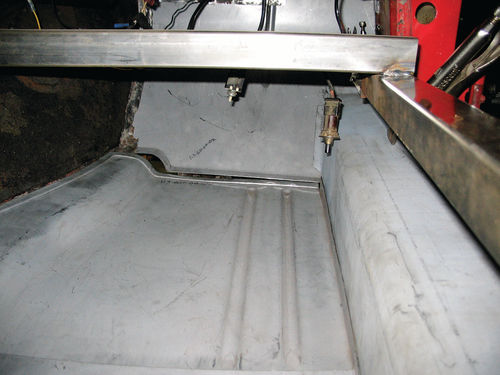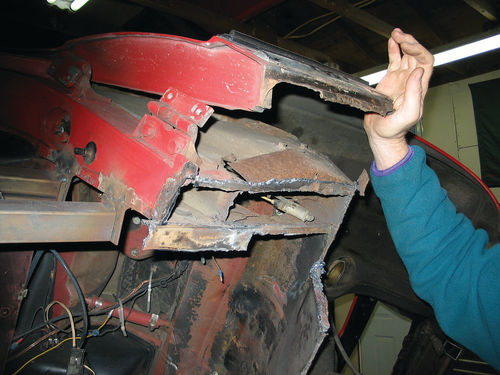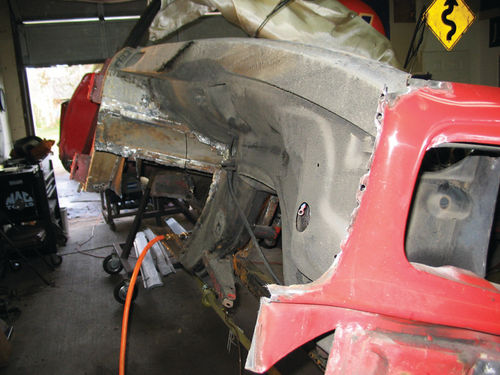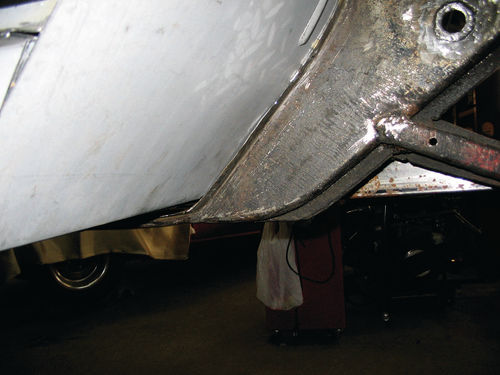My 1964 Mercedes 230SL, Pt. 4
As the Project Continues to Grow in Scope, Doubts Linger Too. But the Call of a Completed Car Is Very Strong.
Editor’s note: Reader Brian Bauske wanted a sports car to use as a regular driver and he found the vehicle he was seeking at an auction—a 1964 Mercedes 230SL. He then drove the car for 15 years before he decided to sell it. With that came pre-sale inspections that led to the discovery of hidden rust that threatened the structural integrity of the unibody car along with past body repairs that had been done in a sloppy fashion. This led to the extensive restoration project being documented here. There have been 24 images in the first three installments so we’ll start here with Photo 25.
TO RECAP: THIS 1964 Mercedes 230SL looked good and served me well over 15 years of ownership. Then I discovered she was rusty underneath, and I committed the car to a restoration project by Troy (“V-12”) Walker at Affinity Imports in Salem, Oregon. What I had expected (I guess hoped) would only involve welding in new floor pans has grown into a project involving virtually all of the metal on the car.
The Effects of Hard Living
It’s now apparent that this vehicle has led a very hard life indeed. I’m sure it was driven on salted roads (the bane of many an old car). Now to make things worse, it’s become clear that there was major collision damage in the front. And both the rust and wreck damage were poorly repaired. New patch panels had been welded over rust, creating “rust sandwiches,” and the body panels were poorly fitted, with many gaps that allowed moisture to enter. There are supposed to be splash panels in the front fender wells that are entirely absent, and many welds were simply omitted, leaving sheet metal to flutter and rattle.
Some Drawbacks in Buying and Selling




What is it about buying and selling cars that can bring out the worst in people? I find myself thinking of the person who sold this car to me and how he assured me over a cup of tea that “one thing you don’t need to worry about is rust; it’s all been taken care of.” I’m also reminded of the person who bought my 1954 Nash and promised me in front of my mother “if you sell me this car Brian, it will never go anywhere else.” He then re-sold it a month later. As if I care. It looked good and he didn’t check underneath. Once you buy my car you can push it over a cliff if you want, which is bad but not as bad as lying.
On the other hand I think of my father’s 1957 Mercedes 219 W105 that he bought new at the factory in Stuttgart. The 219 is assembled from a 220 front end mated to a 218 rear end. It had the renowned straight-six engine very much like the one in my car, and the same type of “swing” rear axle, articulated in the middle and sealed by a horizontal rubber boot (Photo 25).
I can assure you that if the boot dries out and cracks on the highway, all the fluid will run out, the differential will overheat, and it will begin to howl, signaling a large repair bill ahead and forcing you to limp home at 20 mph. After this happened twice, my father astutely packed the unit full of bananas to temporarily dampen the noise and traded it in immediately.
The lesson to all this is clear: caveat emptor, let the buyer beware.
The Extensive Project Moves Forward
Back at Affinity Imports with Troy, I’m now totally committed to an extensive rebuild. We have purchased a good portion of the sheet metal catalog of K&K Manufacturing. Troy and his assistant Steve have continued to cut out the old and perform trial fitting of the new pieces (Photo 26).
I have over 150 photos and most of them are ugly shots of rust. Some are so gruesome I hesitate to include them for fear of demoralizing every reader who owns an old unibody car. Here are a few of the better ones:
The good news is that I can now start to see what the new sheet metal will look like. I’m also confident that we will ultimately be able to accomplish all the repairs, including the frame rails. The bad news, however, keeps rolling in:
1. The fenders will need to be removed and welded back on (Photos 27 and 28).
2. The right front frame may need to be straightened, so a visit to the frame shop for careful measurements is coming up (Photo 29). If it is bent it will have to be cut off, properly aligned and then rewelded.
3. Troy now wants to make sure all the rust has been removed by having the car (what’s left of it, that is) stripped and immediately given a protective coat of electrostatic primer. This will leave the car in “bare metal” in preparation for a now almost inevitable paint job. We are deliberating whether to use acid immersion or electrolytic process (which costs about twice as much). I know there has been a lot of discussion in this magazine over the years about the best way to strip metal, and I’ll be checking my back issues. I’ll help with the due diligence but ultimately I’m going to have to trust Troy to make the right choice.
On bad days I wonder if I shouldn’t have pushed this car off a cliff myself and come out ahead. On good days I’m already salivating to take her on the road and head south with the top down. Fifteen years on, I’ve discovered an excellent technical resource, the international Pagoda Group, which includes an extensive buyers’ guide. I can’t recommend it highly enough (The Pagoda Group: http://sl113.org).
For some reader feedback regarding this project, see page 32.
















